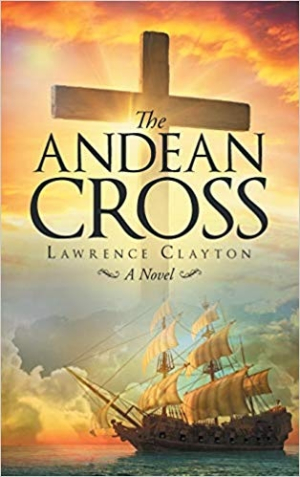
The Andean Cross
Avid historians chase the truth in The Andean Cross, a history-driven adventure novel.
In Lawrence Clayton’s global adventure The Andean Cross, a devoted team of divers discovers a lost ship and explores an alternate history.
A Spanish ship sunk off the coast of Panama City in 1544 under unusual circumstances. For the longest time, experts were unable to locate the wreckage. Now, a team of divers and historians led by Matthew Western are bound and determined to discover what secrets lay hidden in the canal waters.
They delve into the mystery, in the process learning that the ship held proof of an ancient rumor: Jesus’s disciples journeyed to the Americas long before the Europeans colonized North America. This search centers on the possible explanation behind a unique artifact found in Peru that bears a striking resemblance to the Christian cross, as well as coins and other artifacts on the ship that make it seem likely that Christians were in the Americas earlier than believed. Matthew and his team dodge assassins and journey around the world in the hopes of validating the rumors and their suspicions.
The driving evidence—the artifacts found on the ship—are a weak lead, though; they do too little to advance the plot. The team finds proof to validate some of their notions, and their explorations proceed with no doubt that they are right. There is no tension as the book works toward an underwhelming resolution.
Every character is driven to find the truth; a priest, Father Richter, is the most dynamic among the cast. An ally that Matthew’s team visits along the way, his brief portion of the novel contains plot developments, but more interesting is Richter himself—a historian and biographer lost in his work and admired for it. His absence in the sections that follow is glaring. Most of Matthew’s team rests in character tropes, filling their assigned roles but not doing much more.
Scenes are set in a bare way, their details limited to suit the tight pace. There’s few wasted scenes or details about the location beyond what is relevant. The text mentions constrained hallways during a chase scene, for example, and a disheveled academic’s home library brimming with books and papers.
While some of the dialogues are natural, dialogue tags lean on adverbs that dampen reader engagement. Conversations not focused on exposition adopt a rough and raw style that’s jarring and contrasts with the flowing prose elsewhere. Characters’ voices blend together, too.
Inconsistencies with punctuation and formatting mar the writing further. Section headers indicate the passage of time; that information is repeated within the first few sentences of the passages that follow, disrupting the reading experience and causing the story to stutter.
The mystery elements lead to narrative propulsion, though it’s clear the path that the characters will take throughout. The ending is appropriate to the story, with concrete proof and first-hand information about the artifact and missing ship resolved, though it reads as more of a natural stopping point than a compelling wrap-up.
Avid historians chase the truth in The Andean Cross, a history-driven adventure filled with tense deep-sea dives, harrowing cat-and-mouse chases, and an intriguing central mystery.
Reviewed by
John M. Murray
Disclosure: This article is not an endorsement, but a review. The publisher of this book provided free copies of the book and paid a small fee to have their book reviewed by a professional reviewer. Foreword Reviews and Clarion Reviews make no guarantee that the publisher will receive a positive review. Foreword Magazine, Inc. is disclosing this in accordance with the Federal Trade Commission’s 16 CFR, Part 255.
